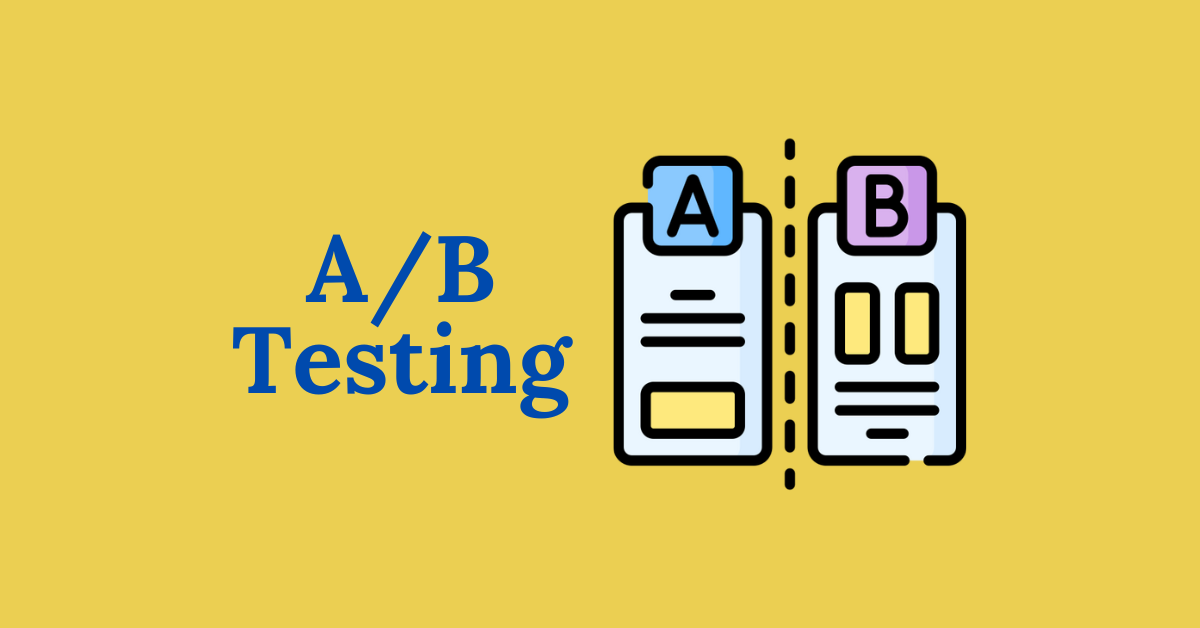In the world of digital marketing, businesses constantly strive to improve their results. But how do you know which strategy or design works best? The answer lies in A/B testing. A/B testing, also called split testing, is a simple way to compare two versions of content to see which performs better. It’s an essential tool for making data-driven decisions that lead to improved marketing performance.
In this blog, we’ll explore what A/B testing is, why it’s important, and how to use it effectively.
What is A/B Testing?: A/B testing is a method of comparing two versions of a marketing element, such as a webpage, email, or ad, to determine which one performs better. Version A could be your original design (the control), while version B is a variation with one element changed.
For example, you could test two email subject lines to see which one gets more opens. The version with higher engagement becomes the winner, and you can implement that change in your campaign.
1. Improves Conversion Rates: Conversion rates are one of the most important metrics in digital marketing. Whether you want more website visitors to sign up for a newsletter, make a purchase, or click on an ad, A/B testing helps you find the most effective way to increase those conversions.Even small changes like tweaking a headline, button color, or call-to-action text can lead to significant improvements in conversion rates.
2. Reduces Marketing Costs: Marketing budgets are often limited, and you want to ensure that every dollar counts. By using A/B testing, you can avoid wasting money on ineffective strategies. Testing different elements helps you focus your efforts on what works best, ensuring that your budget is spent efficiently.
For example, if you’re running Facebook ads, you can test two versions of an ad to see which one generates more clicks at a lower cost. This helps you optimize your spending and maximize your return on investment (ROI).
3. Data-Driven Decision Making: A/B testing removes the guesswork from your marketing efforts. Instead of relying on intuition or opinions, you make decisions based on real data. This leads to more confidence in your choices and better results.For instance, if you’re unsure whether a longer or shorter landing page will perform better, A/B testing will show you which version is more effective in driving conversions. The data speaks for itself, making your decisions more reliable.
4. Enhances User Experience: Your audience’s experience with your website or ad plays a big role in whether they convert. A/B testing allows you to test different designs, layouts, or navigation options to improve user experience. For example, you might test two different webpage designs—one with fewer distractions and one with more content. By measuring which one keeps visitors engaged and leads to conversions, you can optimize your site for better user satisfaction.
5. Increases Engagement: A/B testing is also useful for increasing engagement with your content. Whether it’s social media posts, emails, or ads, you can test different formats, images, or copy to see which resonates more with your audience. Let’s say you’re testing two versions of a Facebook ad—one with a video and one with an image. A/B testing will show you which version generates more likes, shares, and comments, helping you craft more engaging content in the future.
6. Supports Continuous Improvement: Digital marketing is always evolving, and what works today may not work tomorrow. A/B testing enables you to continually improve your campaigns by regularly testing new ideas and optimizing based on results. This ensures that your strategies remain effective over time.You can think of A/B testing as a way to fine-tune your marketing efforts. With each test, you gain more insights and improve your approach, leading to better long-term success.
How to Conduct an A/B Test: Now that you understand why A/B testing is crucial, let’s quickly cover how to conduct one. 1. Define Your Goal: First, decide what you want to test and what outcome you want to achieve (e.g., increasing conversions or engagement). 2. Create Two Versions: Make two versions of the element you want to test. Ensure that only one thing changes between version A and version B (e.g., a headline, button color, or image). 3. Split Your Audience: Show version A to one half of your audience and version B to the other half. 4. Analyze the Results: After the test runs for a set period, analyze the data to see which version performed better. 5. Implement the Winner: Once you know which version is more effective, use it in your marketing campaigns moving forward.
Conclusion: A/B testing is a simple yet powerful tool that helps you improve your digital marketing efforts. By comparing two versions of your content, you can make data-driven decisions that lead to higher conversion rates, better user experiences, and more engagement. Whether you’re testing ads, emails, or webpages, A/B testing ensures that your marketing strategies are always optimized for success.In today’s competitive digital landscape, relying on guesswork is risky. A/B testing gives you the insights you need to make smarter choices and drive better results for your business.




